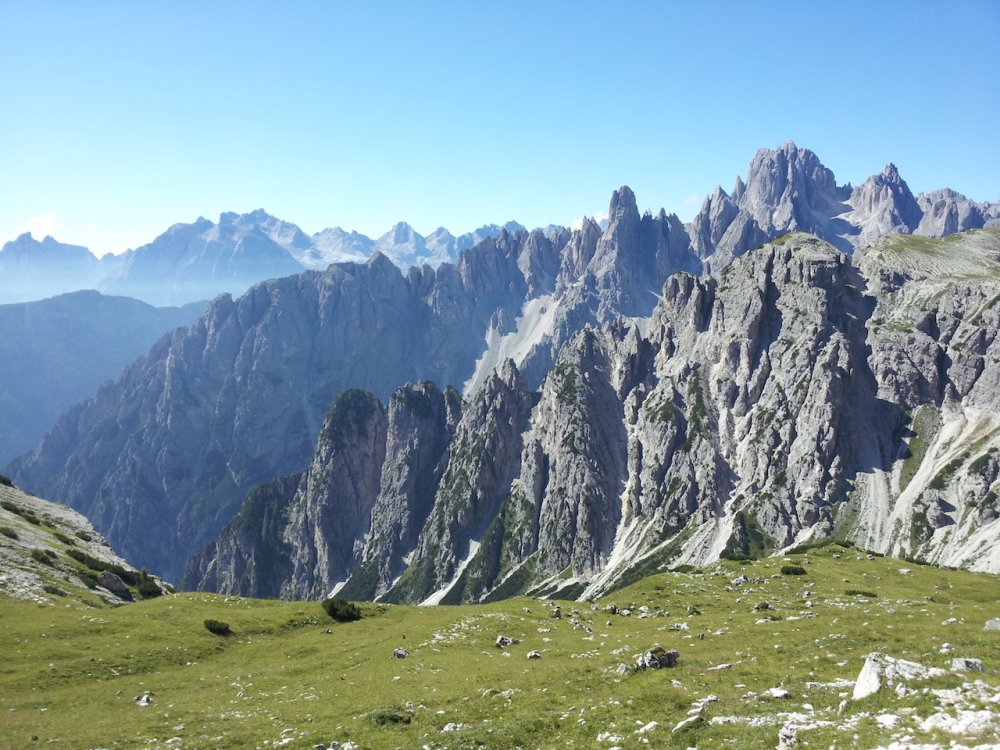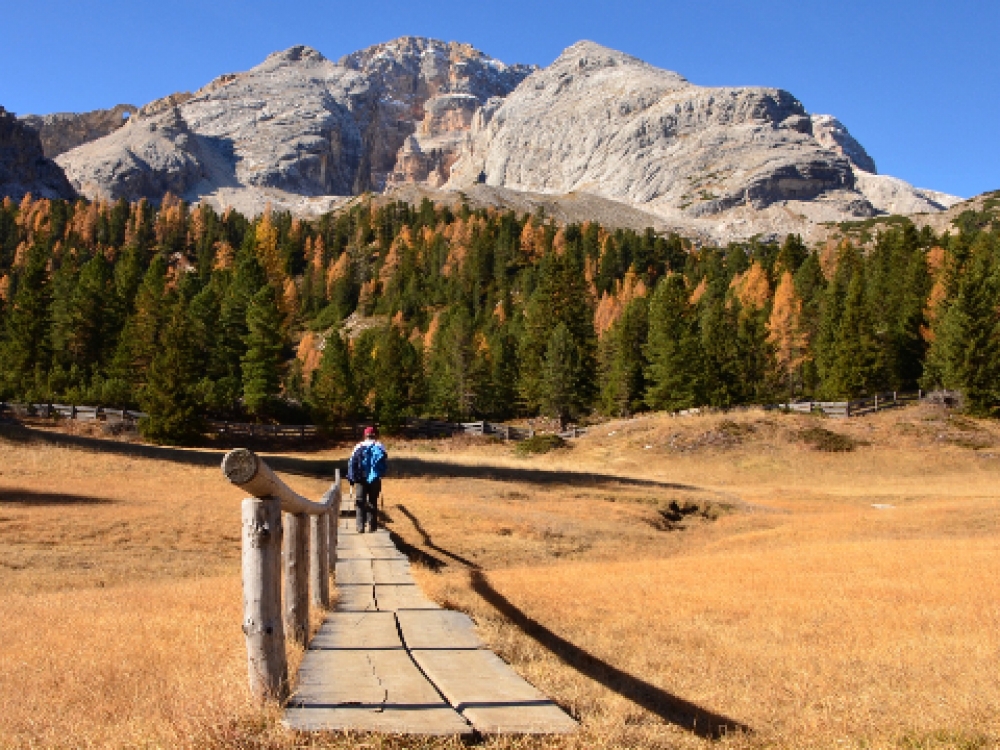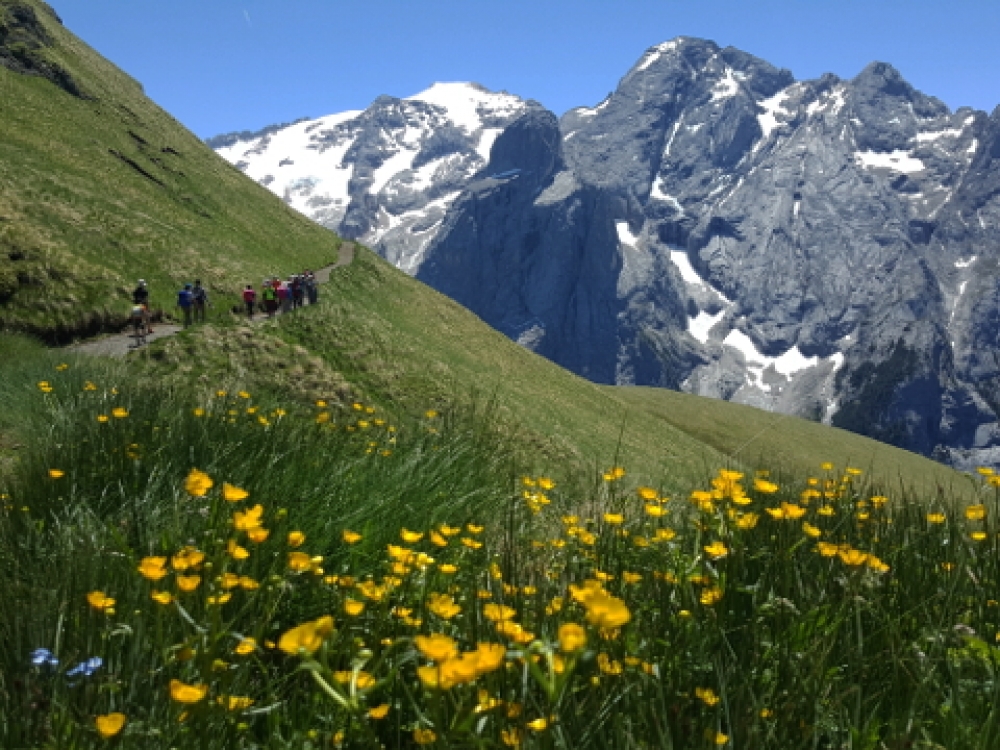Your self-guided hiking trips (FAQ)
How to organize your self-guided hiking itineraries in the Dolomites

Will I get lost on self-guided walks in the Dolomites? How good are the signs?
People very rarely get lost if they follow the walking notes and signs carefully.
What lunch options will I have?
There are mountain huts/refuges and, more rarely, restaurants on both our continuous and day walk self-guided itineraries. Where these are not available, or you are there out of season, hotels and refuges can make you packed lunches if you request these the night before.
Walking paths – what is the terrain like in the Dolomites?
Dolomite terrain varies but, as in all mountain areas, expect at least some sections of loose gravel paths and tracks on most walks. Paths are generally comfortably wide, but there will sometimes be eroded or narrower sections. If you are afraid of heights or dislike loose gravel, let us know and we will try to bear this in mind in designing your itinerary as far as possible.
Are special dietary requirements catered for?
Vegetarians and vegans now no longer raise eyebrows in Italy and a range of food is available for both. Note, however, that in Italy you will not generally be provided with specifically vegetarian/vegan food and the Italian pasta/rice/soup ‘first’ course and then meat/fish/egg ‘second’ course menu system means that the latter can be a little repetitive and limited, especially for vegans. This is especially true in the mountain huts where food is good but not generally gourmet.
Celiacs are increasingly catered for in Italy but be aware that hotels and restaurants will not normally provide special bread. They may well have gluten-free pasta but this cannot be guaranteed though this – and other gluten free products – can be bought in chemists and some food shops.
What are refuges like in the Dolomites?
Older style refuges are generally straightforward dormitories with rooms of various sizes and outside bathrooms with showers available at extra cost. Many modernised refuges, however, have double rooms and even en-suite bathrooms. These cost extra and are in short supply. All refuges provide substantial breakfasts which do not generally include much fruit.
Are credit cards accepted everywhere?
Credit cards are accepted in most places in towns. In the refuges you may be able to pay with cards but we recommend you bring cash as well as these are remote and may not always have telephone access.
Telephone access. Will I have mobile phone cover in the mountains?
Hotels and refuges now frequently have Wi-Fi but this cannot be guaranteed and the same is true of mobile phone cover which can be quite patchy. Refuges/hotels sometimes have fixed phone lines which can be used at a cost.
Water: is there drinking water en route?
There are plenty of streams on most walks but you are not advised to drink this unless it comes directly out of the ground in a spring, in which case walkers commonly fill their bottles up with it. Refuges usually tell you that their water is not drinkable. You will need to buy bottled water in these.
Will I be able to leave some of my luggage at my first hotel? What will I do with my car for the week while I’m trekking?
Hotels are more than happy to keep a bag or two for you while you are away hiking and generally have special spaces for this. Car-park wise, hotels don’t always have big enough car parks for you to leave your vehicle with them for more than a day or two but there are free car parks in the towns.
Are the treks suitable for my children? Will they be able to cope?
This very much depends on the ages of your children and what they are used to. We would not generally recommend taking children under 10 on place-to-place walks, especially refuge to refuge trips but you know your children and what they are capable of best. Do bear in mind, however, that, in the mountains there are not too many ways of cutting walks short. If in doubt, ask us for advice.


